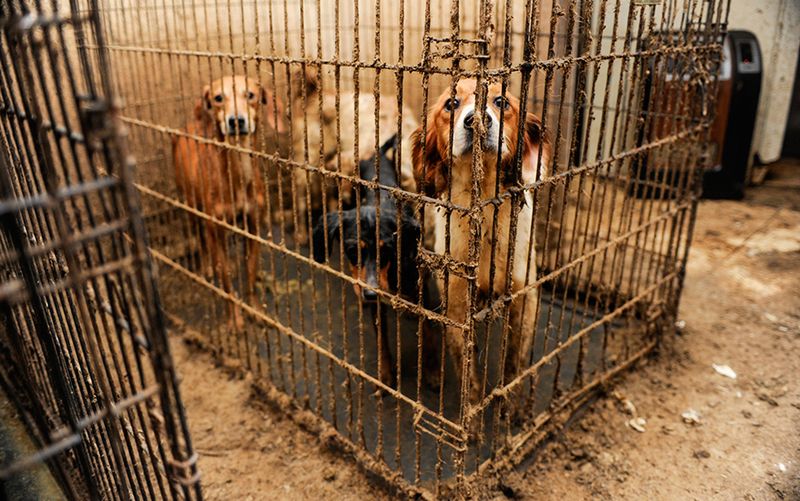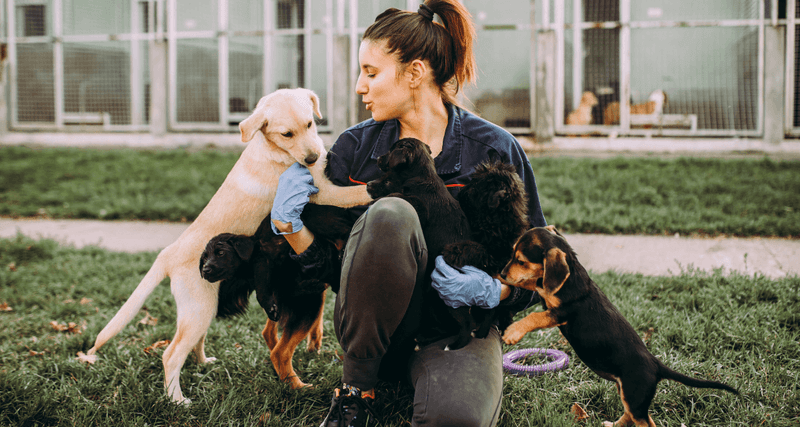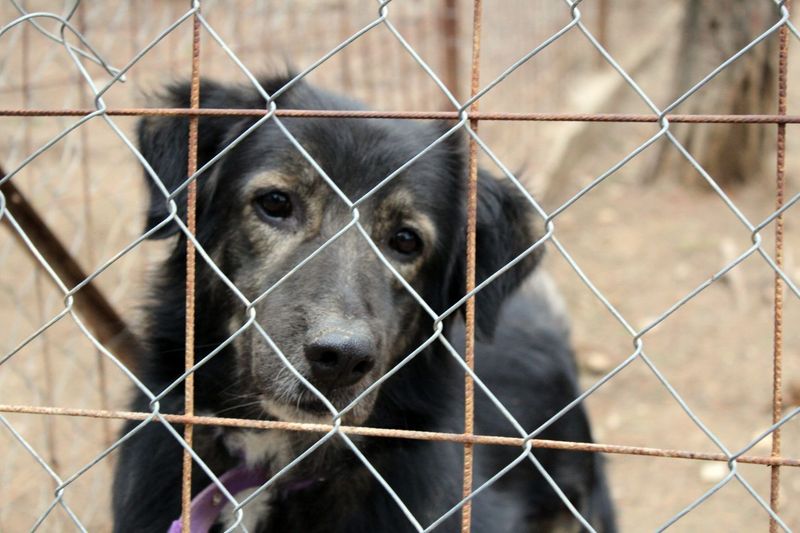Long-term shelter residence can significantly impact a dog’s well-being, leading to various physical, emotional, and behavioral challenges. These effects often go unnoticed but can profoundly affect the dogs’ quality of life and their potential for successful adoption. Exploring these effects can help us understand the urgent need for improving shelter conditions and finding loving homes for these vulnerable animals.
Reduced Social Interaction
Being cooped up in a shelter often means limited human interaction for dogs. This lack of socialization can lead to behavioral issues, making it harder for them to adjust to family life. In shelters, dogs miss out on the love and companionship that a home provides. Interaction with humans is crucial for their happiness.
Without regular contact, dogs can become withdrawn or overly needy. They may bark excessively or become anxious. The simple act of petting a dog can brighten its day, showing just how important social bonds are.
Increased Anxiety and Stress
Imagine living in a constant state of uncertainty. For dogs in shelters, this is a daily reality. The noise, the lack of personal space, and the ever-changing environment contribute to high stress levels. Anxiety in these dogs manifests in various ways, from restlessness to destructive behavior.
The constant buzz and activity in shelters can be overwhelming. This heightened stress can affect their health, leading to a weakened immune system. Dogs, much like humans, thrive in stable environments. Providing a calm and predictable setting could significantly reduce their anxiety.
Physical Health Decline
Long-term shelter dogs often face physical health challenges. Without regular exercise, they can suffer from obesity, joint problems, and muscle atrophy. The lack of mental stimulation further compounds these issues, leading to lethargy and depression.
Veterinary care may be limited or inconsistent, causing untreated health problems to worsen over time. The stress of shelter life itself can also manifest in physical ailments, from skin irritations to digestive issues. Regular health checks and a balanced lifestyle are essential to keep these dogs healthy and happy.
Behavioral Regression
Extended periods in a shelter can hinder a dog’s behavioral development. Dogs may regress in toilet training, leash walking, and responding to commands. The lack of routine and discipline can foster unpredictability in behavior.
Shelters, despite their efforts, struggle to provide individual training attention. This regression makes reintegration into a home challenging. Each day in a shelter without proper behavioral support can set a dog back significantly. However, with patience and training, these dogs can relearn and thrive in a home setting.
Loss of Trust in Humans
Building trust takes time, but it can be lost quickly. Shelter dogs, especially those with a history of trauma, may develop a deep-seated distrust of humans. They might avoid eye contact, shy away from touch, or even exhibit fear-based aggression.
This mistrust complicates adoption chances, as potential adopters seek dogs that are approachable and friendly. To rebuild trust, dogs need consistent, positive interactions. Patience, understanding, and gentle handling can help them see humans as allies, not threats, again.
Isolation-Induced Depression
Shelter environments, with their lack of stimulation and companionship, can lead to depression in dogs. This condition manifests in various ways, such as lethargy, loss of appetite, and disinterest in play. Just like humans, dogs need interaction and stimulation to stay mentally healthy.
The routine of shelter life can exacerbate their loneliness, leading to a deep sadness that’s hard to shake. Depression can also impact their physical health, creating a cycle that’s difficult to break without intervention. Providing socialization and enrichment is crucial for their well-being.
Lack of Personal Space
In a bustling shelter, personal space is a luxury that many dogs don’t have. The constant presence of other animals and humans can be overwhelming. Dogs, much like people, need a space to call their own where they can retreat and feel safe.
Without it, they may become stressed and anxious. This lack of space can also lead to conflicts with other animals, as they compete for territory. A personal space, even a small one, can provide a sanctuary for them to relax and recharge.
Understimulation
Shelter life can be monotonous. The lack of mental and physical stimulation leads to boredom, which can result in destructive behaviors. Dogs thrive on activity, whether it’s a walk, a game of fetch, or simply exploring their surroundings.
In shelters, opportunities for such activities are limited. This understimulation can cause frustration and lead to negative behaviors like chewing or excessive barking. Enrichment activities and interactive toys can make a significant difference, keeping their minds sharp and spirits high.
Increased Aggression
The stress and frustration of shelter life can sometimes manifest as aggression. Dogs may become defensive, guarding their limited resources or reacting poorly to the crowded environment. This aggression can be directed towards other dogs or humans, complicating adoption prospects.
Understanding the roots of this behavior is essential. With proper training and a calm, stable environment, many aggressive tendencies can be addressed. It’s crucial to recognize that this aggression is often a response to their circumstances, not a true reflection of their nature.
Potential for Long-Term Trauma
Shelter life can leave lasting scars, both visible and invisible. Dogs may develop trauma from prolonged exposure to stress, noise, and isolation. This trauma can manifest long after they’ve left the shelter, affecting their ability to bond and feel secure.
Trauma-informed care is vital in helping these dogs heal. Recognizing the signs of trauma and addressing them with patience and understanding can make a world of difference. With the right support, these dogs can overcome their past and enjoy a brighter future.
Development of Stereotypic Behaviors
Shelter conditions can lead to the development of stereotypic behaviors, such as pacing, circling, or excessive licking. These behaviors are a coping mechanism for stress and boredom. Over time, they can become ingrained, making it hard for the dog to adapt to a regular home environment.
Addressing these behaviors requires patience and understanding. Providing mental stimulation and a structured environment can help reduce their occurrence. By recognizing these signs early, efforts can be made to provide the support and care needed to mitigate these behaviors.
Overlooked Potential
Every dog has potential, but shelter life can overshadow it. Many dogs are overlooked due to their anxious demeanor or lack of training. Yet, beneath the surface, they have the capacity to become beloved companions.
Adopting a shelter dog offers the chance to unlock this potential. With love and training, these dogs can surprise with their adaptability and affection. Every shelter dog deserves the opportunity to shine. Recognizing and nurturing their hidden talents can lead to a rewarding relationship for both the dog and the owner.
Limited Training Opportunities
Training is crucial for a dog’s development, but shelter environments often lack the resources to provide it. With limited staff and time, many dogs miss out on learning basic commands and social cues.
This lack of training can hinder their chance of adoption, as potential owners seek dogs that are already house-trained or obedient. However, with the right approach, shelter dogs can quickly learn and adapt. Offering training not only improves their adoption prospects but also enhances their quality of life. Consistent training builds confidence and strengthens the bond between dog and human.
Separation Anxiety
Shelter dogs often develop separation anxiety due to the constant cycle of people coming and going. This anxiety becomes evident when they are left alone or when their routine changes. Dogs may exhibit symptoms like barking, destructive behavior, or attempts to escape.
Understanding and addressing separation anxiety is key to a successful adoption. Gradual desensitization and consistent routine can help ease their fears. With time and patience, shelter dogs can learn to feel secure, knowing that they won’t be left behind again.
Loss of Playfulness
Shelter life can sap the joy from even the most playful dogs. The lack of stimulation and interaction can lead to a decline in their natural playfulness. Dogs that once chased balls with abandon may now ignore toys altogether.
Reviving this playfulness requires time and encouragement. Interactive play sessions, new toys, and positive reinforcement can help reignite their interest. Play is not just about fun; it’s an essential part of a dog’s mental and physical well-being. Reintroducing play can transform their outlook and enhance their happiness.
Nutritional Deficiencies
The diet of shelter dogs often lacks variety and quality, leading to nutritional deficiencies. These deficiencies can affect their coat, energy levels, and overall health. Dogs need a balanced diet to thrive, and the limited resources in shelters often mean compromises in nutrition.
Addressing these deficiencies requires careful dietary planning and supplementation. Improving a dog’s diet can have immediate effects on their health and mood. For potential adopters, understanding and correcting nutritional gaps is key to ensuring a healthy and happy life for their new pet.
Fear of Change
Change can be daunting for shelter dogs. Having spent substantial time in one environment, they may become fearful or anxious in new settings. This fear can manifest in reluctance to explore or interact in unfamiliar places.
Helping a dog adjust to change requires patience and gradual exposure. Providing a stable and reassuring presence can ease their transition. Over time, they can learn to embrace change, discovering new experiences with confidence. Ensuring a smooth transition from shelter to home can make a world of difference in their adaptation.
Decreased Adoption Chances
Prolonged shelter stays can diminish a dog’s chances of being adopted. Potential adopters may overlook these dogs in favor of younger or more outgoing animals. Yet, shelter dogs have unique qualities and stories waiting to be discovered.
Highlighting these qualities and providing support can turn the tide. Adoption events, social media, and community programs can raise awareness and match these dogs with loving families. Every dog deserves a chance to find a home, and with the right approach, their stories can have happy endings.


















